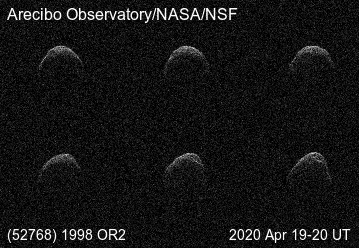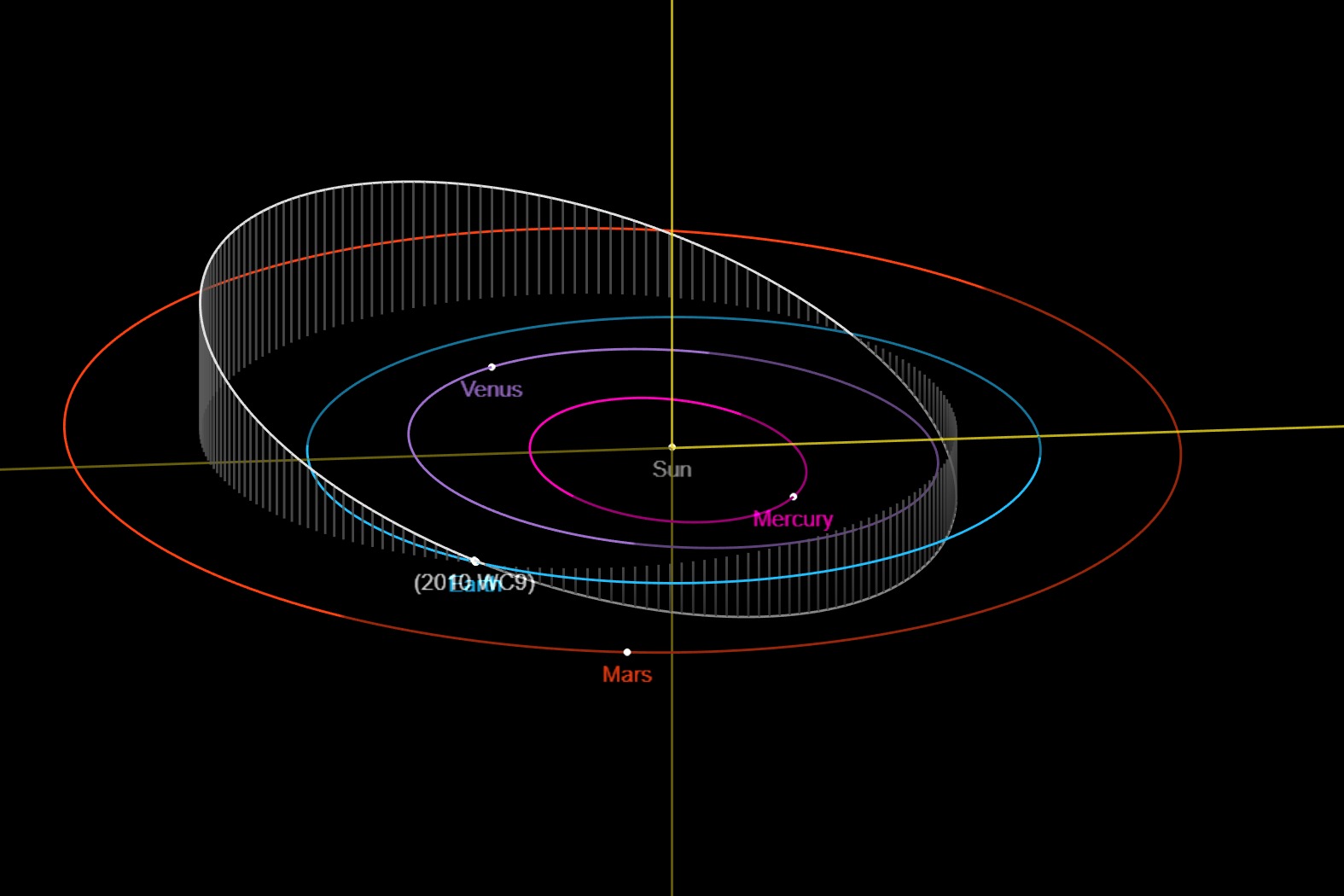A fascinating asteroid named 1998 OR2 pays our neck of the inner solar system a visit early Wednesday morning, and if skies are clear, you might just get a chance to watch it slide by.
Continue reading “Watch Asteroid 1998 OR2 Zip Past Earth This Week”Recovered Asteroid 2010 WC9 Set to Buzz the Earth Tomorrow
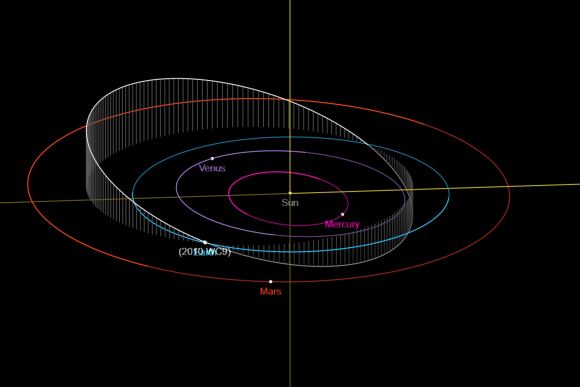
Incoming: The Earth-Moon system has company tonight.
The Asteroid: Near Earth Asteroid 2010 WC9 is back. Discovered by the Catalina Sky Survey outside Tucson, Arizona on November 30th, 2010, this asteroid was lost after a brief 10 day observation window and was not recovered until just earlier this month. About 71 meters in size, 2010 WC9 is one of the largest asteroids to pass us closer than the Earth-Moon distance.
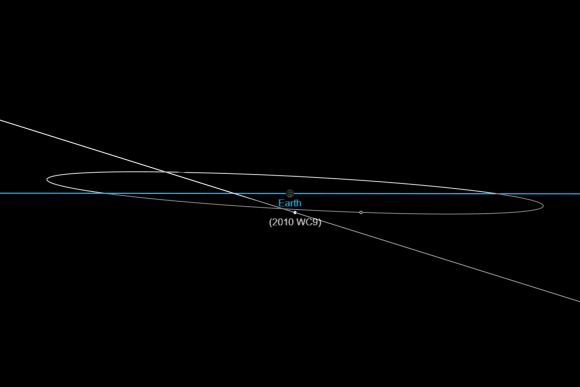
2010 WC9 poses no threat to the Earth. About the size of the Statue of Liberty from the ground level to her crown, the asteroid is over three times bigger than the one that exploded over Chelyabinsk, Russia on the morning of February 15th, 2013.
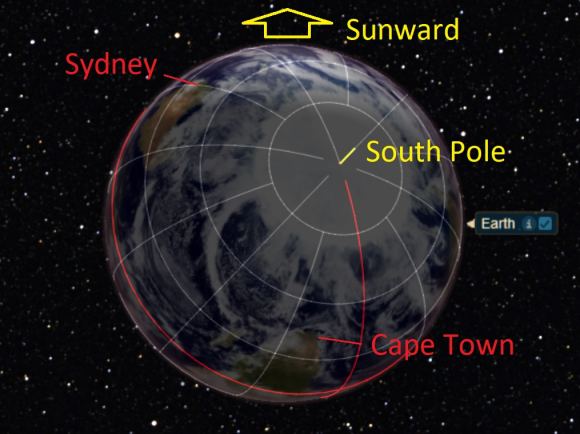
The Pass: 2010 WC9 passes just 0.5 times the Earth-Moon distance (126,500 miles or 203,500 kilometers) on Tuesday, May 15th at 22:05 UT/6:05 PM EDT. That’s only roughly five times the distance of satellites in geosynchronous orbit. The asteroid is also a relative fast mover, whizzing by at over 12 kilometers per second. An Apollo-type asteroid, 2010 WC9 orbits the Sun once every 409 days, ranging from a perihelion of 0.78 astronomical units (AU) outside the orbit of Venus out to 1.38 AU, just inside the orbit of Mars. This is the closest passage of the asteroid by the Earth for this century.
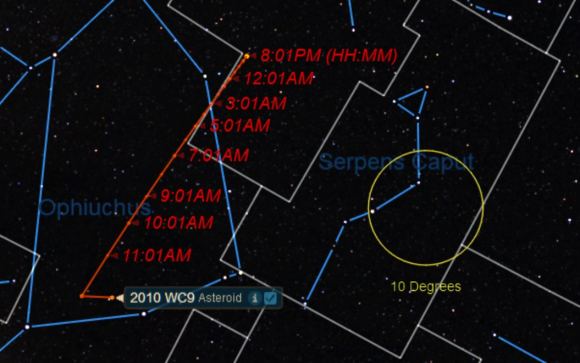
Observing: This one grabbed our attention when it cropped up on the Space Weather page for close asteroid passes this past weekend: a large, fast mover passing close to the Earth is a true rarity. At closest approach, 2010 WC9 will be moving at 0.22 degrees (that’s 13 arcminutes, about half the span of a Full Moon) per minute through the constellation Pavo the Peacock shining at magnitude +10, making it a good telescopic object for observers based in South Africa as it heads over the South Pole.
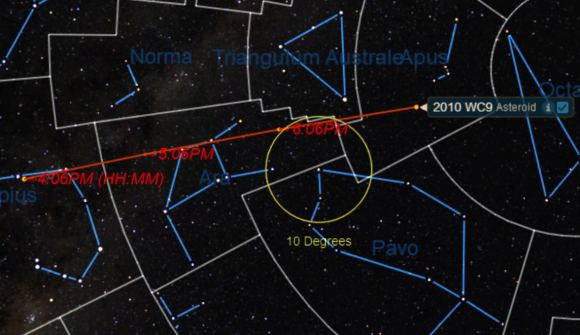
North American and European observers get their best look at the asteroid tonight into early tomorrow morning while it’s still twice the distance of the Moon, shining at 13th magnitude and moving southward through the constellation Ophiuchus and across the ecliptic plane.
The best strategy to ambush the space rock is to simply aim a low power field of view at the right coordinates at the right time (see below), and watch. You should be able to see the asteroid moving slowly against the starry background, in real time.
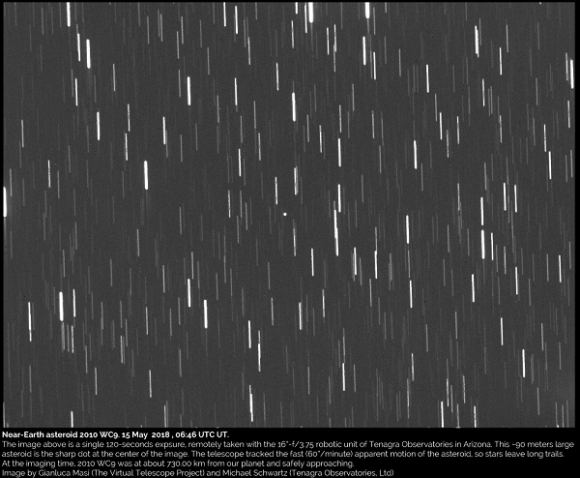
Keep in mind, the charts we made here are geocentric, assuming you’re observing from the center of the Earth. Parallax comes into play on a close asteroid pass, and the Earth’s gravity will deflect 2010 WC9’s orbit considerably. Your best bet for generating a refined track for the asteroid is to use NASA JPL’s Horizons web interface to generate Right Ascension/Declination coordinates for the 2010 WC9 for your location.
How do you ‘lose an asteroid?” Often, an initial observation arc for a distant asteroid is too short to pin down a refined orbit. We have a blind spot sunward, for example, and fast moving asteroids can also be difficult to track across rich star fields and movement from one celestial hemisphere to the next. Recovery of 2010 WC9 earlier this month now gives us a solid seven year observation arc to peg its orbit down to a high accuracy.
Clouded out, or live in the wrong hemisphere? Slooh will carry an observing session for 2010 WC9 starting tonight at 24:00 UT/ 8:00 PM EDT. The Northholt Branch Observatories in London, England will also stream the pass live via Facebook tonight. Check their page for a start time.

There’s no word yet if Arecibo radar plans to ping 2010 WC9 over the coming days, but if they do, so expect to see an animation soon.
Don’t miss tonight’s passage of 2010 WC9 near the Earth, either in person or online.
Watch Asteroid 2016 VA Pass Through Earth’s Shadow

Holy low-flying space rocks, Batman.
Newly discovered asteroid 2016 VA snuck up on us last night, and crossed through the Earth’s shadow to boot.
Discovered just yesterday by the Mount Lemmon Sky Survey based outside of Tucson Arizona, 2016 VA passed just 58,600 miles (93,700 kilometers) from the surface of the Earth this morning at 00:42 Universal Time (UT). That’s a little over 20% of the distance from the Earth to the Moon, and just over twice the distance to the ring of geosynchronous and geostationary satellites around the Earth.
This sort of close pass of a newly discovered asteroid happens a few times a year. What made 2016 VA’s passage unusual, however, was its transit through the Earth’s shadow. The discovery was announced yesterday by the Minor Planet Center, and astronomer Gianluca Masi soon realized that the Virtual Telescope Project had a unique opportunity to capture the asteroid on closest approach.
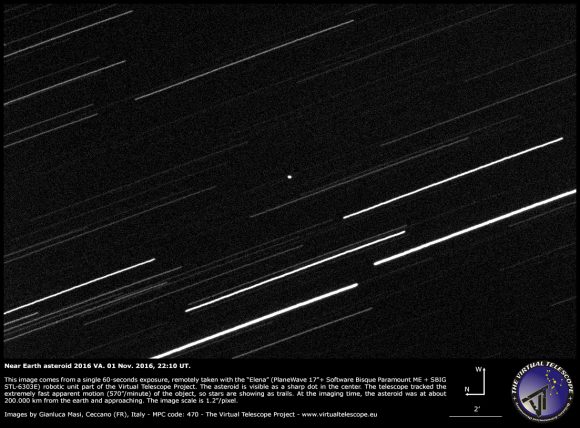
Gianluca Masi explained how the difficult capture was done:
“The image is a 60-second exposure, remotely taken with “Elena” (a PlaneWave 17” +Paramount ME+SBIG STL-6303E robotic unit) available at the Virtual Telescope project. The robotic mount tracked the extremely fast apparent motion of the asteroid, so stars are trailing. The asteroid is perfectly tracked; it is the sharp dot in the center, marked with two white segments. At imaging time, asteroid 2016 VA was at about 200,000 kilometers from us and approaching.”
Catching a fast-moving asteroid such as 2016 VA on closest approach isn’t easy. First off, there’s an amount of uncertainty surrounding the orbit of a newly discovered object until more observations can be made. 2016 VA passed close enough to the Earth that our planet’s gravity substantially altered the tiny asteroid’s future orbit. Also, a house-sized Earth-crosser like 2016 VA is really truckin’ across the sky on closest approach: 2016 VA was moving at 1500” a minute through Earth’s shadow – that’s 25” a second, fast enough to cross the apparent diameter of a Full Moon in just 72 seconds.
Masi also notes:
“During its flyby, asteroid 2016 VA was also eclipsed by the Earth. We covered the spectacular event, clearly capturing the penumbral effects. The movie is an amazing document showing the eclipse. Each frame comes from a 5-second integration.”
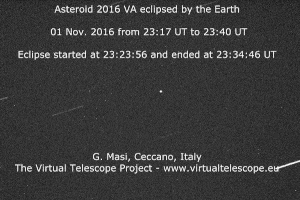
At an estimated 16 to 19 meters in size, 2016 VA shined at 13th magnitude as it crossed the southern hemisphere constellation of Sculptor on closest approach. It crossed through the Earth’s shadow for 11 minutes from 23:23 to 23:34 UT last night, just over an hour before closest approach. You can see the dimming effect of the Earth’s outer penumbral shadow in the video, just before the asteroid strikes the inner dark umbra and emerges back into eternal sunshine once again. Sitting on 2016 VA, and observer would have seen a total solar eclipse, as the bulk of the Earth passed between the asteroid and the Sun in an event not witnessed by the tiny world for thousands of years.
Such transits of asteroid through the Earth’s shadow have been observed before: 2012 XE54 crossed through the Earth’s shadow a few years back, and 2008 TC3 crossed through the Earth’s shadow before striking the Nubian desert in the early morning hours of October 7th, 2008.
Satellites in geostationary orbit also pull a similar vanishing act right around either equinox as well.
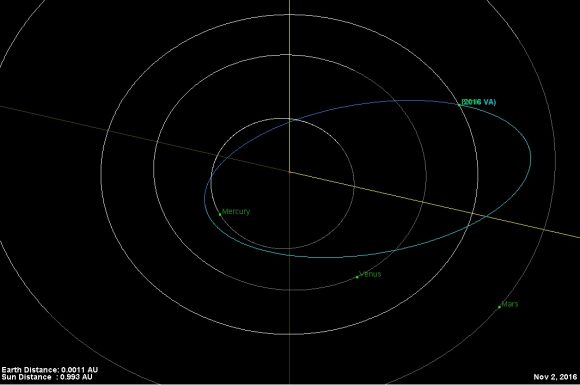
2016 VA is also a similar size to another famous space rock: the 20 metre asteroid that exploded over the city of Chelyabinsk the day after Valentine’s Day in 2013. 2016 VA gave us a miss, and won’t make another pass as close to the Earth again for this century.
To our knowledge, such a video capture of an asteroid crossing through Earth’s shadow is a first, or at least the first that we’ve seen circulated on ye ole Web.
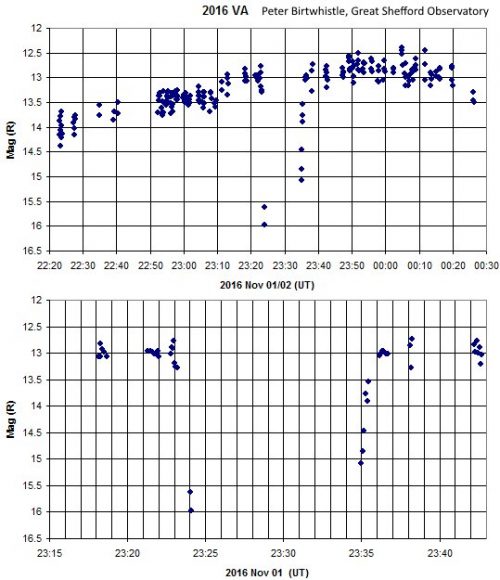
Congrats to the good folks at the Virtual Telescope Project for swinging into action so quickly, and providing us with an amazing view!
-Catch the closest Full Moon of the year (and for many years to come!) on November 14th live courtesy of the Virtual Telescope Project.

